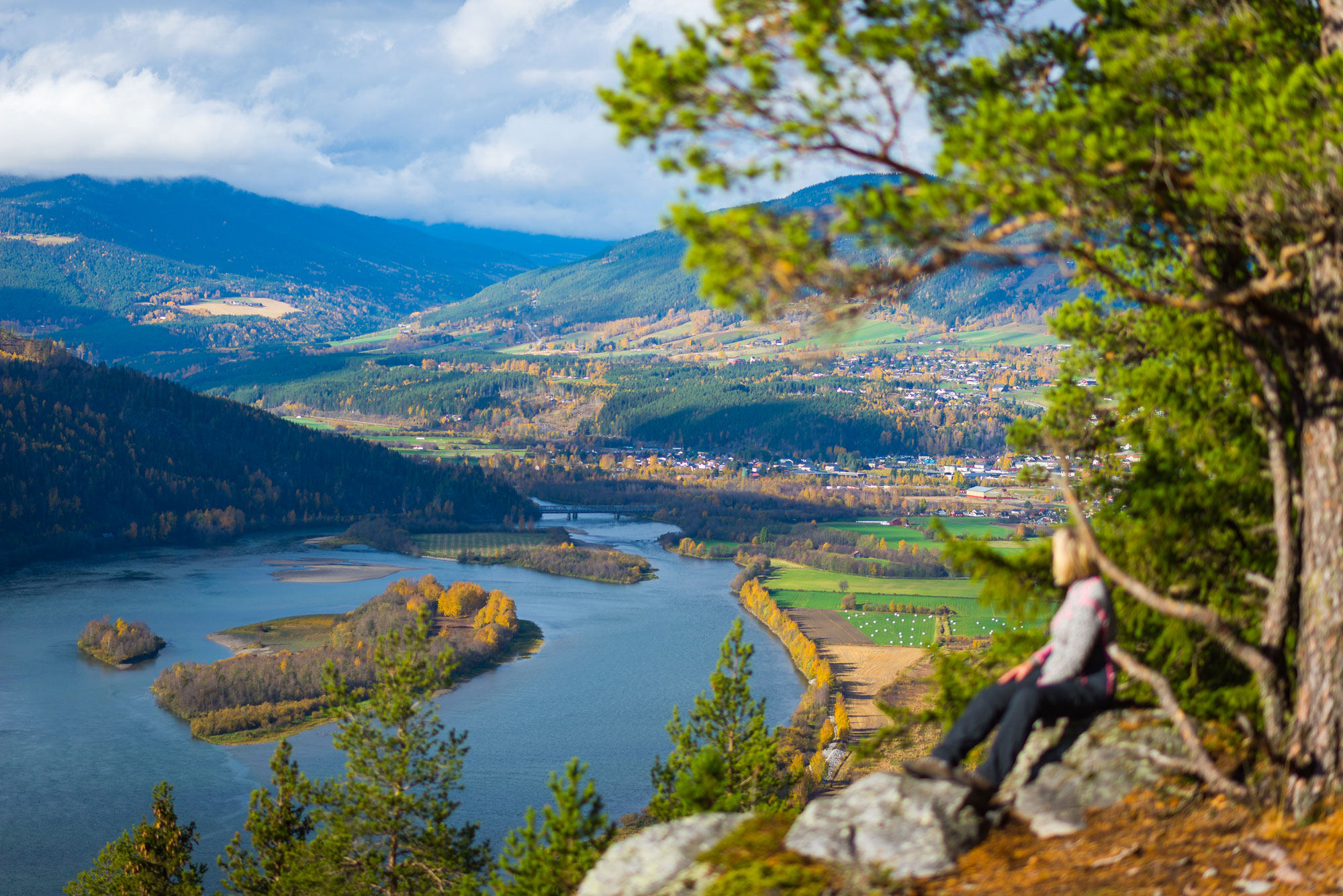Høgkleiva’s hidden history – the old walls
On your way up to Høgkleiva vantage point, you pass through an opening in a low, overgrown stonewall. There is a narrow path leading up to the highest point – a plateau surrounded by steep hills. The wall comes back into view on the northern slope, but is not easy to spot from the top.

These ancient stone walls stem from a time of violence and unrest in the valley, almost 2000 years ago. The wooden palisades they once supported are long gone, and so are the soldiers and farmers keeping watch.
Protecting the village
From the top of Høgkleiva, enemies could be spotted at long distance. The alarm could thus be raised in the village and a defence mobilised. Perhaps this gave people a chance to escape, or to barricade themselves behind the walls up on the almost inaccessible plateau.
The farms were located not far from Høgkleiva and these fortifications. If you stand on the uppermost plateau and look north, you will see the stave church and some of our modern-day agricultural land with fields and pastures. Although a lot has changed from almost 2 000 years ago, it is possible to imagine a different view – a vibrant community with shouts and laughter, and smoke rising from longhouses and forges.

Hillforts – fortifications or something else?
These structures, built in near inaccessible locations, are known as hillforts, and the fortification at Høgkleiva is one of four of its kind in Gudbrandsdalen. Similar wall systems are found at several locations in inland Norway, and are also common across southern and eastern Norway as well as in Trøndelag.
The term hillfort assumes a link with the local community and carries connotations of something military or defence related. This interpretation stems from the 1800s, but more recent research has questioned whether these sites may have had other uses. They could have served a pagan or religious purpose, and they may also have been settlement sites. The reason for this lack of knowledge is that few have been subject to archaeological survey.

Our understanding of the past
Investigations so far show that the hillforts were in particularly active use during late Antiquity and the Migration Period, i.e. the first few centuries up to around 550 AD. However, traces of Early Iron Age settlements discovered in the area by Ringebu Stave Church, just north of Høgkleiva, may indicate that the hillfort was used by local farms also then.
We have interpreted the wall structure as forming part of a local defence system in a time marred by war and unrest. Then a hierarchical society ruled by the elites developed. The more affluent in Gudbrandsdalen had connections and formed alliances in the centres of power further south in the country, and in what today are Denmark and Sweden. There may also have been men from the valley leaving to join Germanic and Roman armies.

Did you know that…
… according to legend, hillforts around the country were often used by thieves and robbers. Stories like these date back to a time when the fear of highway robbery was very real, and the isolated setting easily inspired folk tales.
If an archaeological survey of the walls and plateau is carried out in the future, we may well discover something that completely changes our understanding of Høgkleiva and its ancient history.
